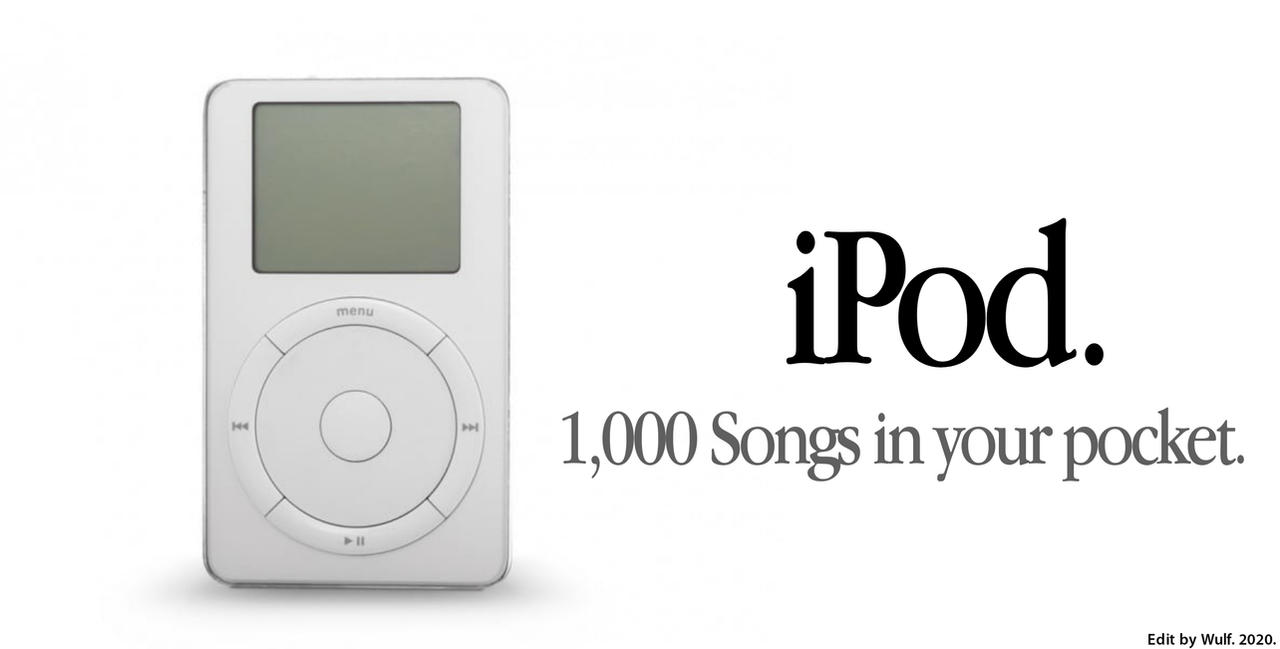Iconic Ads: iPod – Thousand Songs in Your Pocket

The focus of the Silhouette campaign, switched from a product focus to urging consumers to “buy the emotion.”
The Apple iTunes debuted in January 2001, followed by the iPod, in late 2001. The iPod was a big hit as the then MP3 players were difficult to operate and had little storage space.
Without a question, the iPod was a fantastic product. However, the product’s popularity was aided greatly by its advertising.
Many don’t remember the first iPod commercial, but it represented a significant step forward in Apple’s marketing strategy.
The first film depicted a man enjoying music from his digital library on his iBook. He then transfers his music to his iPod, shuts his iBook, and inserts earbuds. When he presses the play button, the volume of the song rises. He then dances and bounces around the room before slipping his iPod into his jacket pocket. He dances out of the room and door. The tune featured was the Propellerheads’ “Take California,” which became the theme of all future advertising.
“iPod; thousand songs in your pocket.”
iPod advertising’s success was due in large part to its simplicity. A brief tagline and simple, straightforward message provided all of the information needed to grasp what the iPod is about.
The visuals were basic. It conveys the idea that the iPod is enjoyable and fashionable. And there was a catchy melody that became stuck in the head.
There were, however, issues. The usage of a ‘real person,’ as Apple design director Ken Segall put it, was one. Jobs avoided employing people in his advertisements because finding an actor who appealed to everyone was tough. It was slightly amateurish, and online some began to refer to it, as the “iClod” commercial.
Silhouette style
In 2003, Chiat/Day’s Susan Alinsangan, an art director, collaborated with Lee Clow and James Vincent, a former DJ and musician, to develop the iPod silhouette films and with Rocket Studio’s Casey Leveque in Santa Monica for the print campaign.
Dark silhouetted figures stood out against brilliantly coloured backdrops. They were generally dancing and, in television commercials, were accompanied by upbeat, lively music. The silhouetted dancers wore earbuds provided by Apple and listened to their iPods. To contrast against the colourful background and black silhouettes, the iPods and earbuds were white. Apple frequently modified the aesthetic of these ads based on the topic or genre of the music.
The hook was interesting, and it didn’t try to impress with any of the person’s coolness. Instead, it generated an iconic picture that became synonymous with Apple and the iPod almost instantly.”
In 2003, the Chiat Day team presented their concepts for the iPod advertising campaign to Steve Jobs and the other members of his marketing team at a meeting.
They shared a wide range of outrageous posts, images, and instances of billboards. Jobs believed that some of the photography stills had potential, but he noted that his marketing staff was obsessed with presenting weird silhouettes of people dancing. The visionary did not find it compelling. He stated that it did not demonstrate the products in any way. “It doesn’t say what it is.”
James Vincent, who worked at Chiat Day, came up with an idea. What if the silhouettes included a phrase that made reference to the product? A phrase along the lines of “1,000 Songs in your Pocket.” That was enough to satisfy Jobs, and he approved of the dancing silhouette campaign. He subsequently claimed that the famous commercials were his idea.
Apple benefited from this huge shift. Previously, Apple advertisements consisted of the product on a white backdrop with a brief tagline. The emphasis was solely on the product.
The focus of the Silhouette campaign, on the other hand, switched from a product focus to urging them to “buy the emotion.” The vivid colours, vibrant music, and other aspects of the advertisements were all energetic. The contrast between the white of the iPod plus earbuds and the black of the silhouette and the bright backdrops served to cement the iPod’s reputation as an icon. The white earbuds became a symbol for the iPod as a whole.
Emotions are bigger than the product and consumers need to connect with the product on an emotional level. The iPod got a personality especially since it was targeted at young people between 18-35 years.
Consumers saw themselves in these ads. Rather than just one person, there was a slew of them. These silhouettes effectively represented “the masses.” They weren’t one group, one sort of person, or one “look,” they were simply people enjoying music.
Podcast
https://portfolio.mentza.com/portfolio/vejayanand/circles/18386
For further reading a) https://kolbyhardydesign.wordpress.com/2017/04/29/reverse-engineer-1000-songs-in-your-pocket/.
b) https://thinkmonsters.com/speakinghuman/media/ipod-dancing-silhouette-musical-ads/
c) https://en.wikipedia.org/wiki/IPod_advertising




25 Comments